#New Amulets
Explore tagged Tumblr posts
Text

Carnelian amulet of a fish (Nile Tilapia, who the ancient Egyptians associated with rebirth) New Kingdom, 18th Dynasty, c. 1390-1295 B.C.
The Walters Art Museum. 42.196
351 notes
·
View notes
Text

5th-Century Amulet Depicting King Solomon Spearing the Devil Discovered in Turkey
Archaeologists in Turkey say they have discovered an ancient amulet depicting a Biblical figure in a battle against the devil.
The rare artifact was found during an ongoing excavation project in Hadrianopolis, an ancient city near Karabük, and dated to the fifth century.
Hadrianopolis was used as a settlement during various periods of history, including during the Roman and Byzantine empires.
Excavation and restoration work has been taking place there since 2003, with over a dozen buildings discovered and multiple massive mosaics found over the years.
The pendant, made of bronze, shows King Solomon, according to a news release issued by Turkey's Karabük University. The ancient ruler is seen riding a horse and holding a spear while defeating the devil, according to Dr. Ersin Çelikbaş, an associate professor at the university. Solomon appears in multiple religions, including Judaism, Catholicism and Islam.



"The depiction of Prophet Solomon on this necklace surprised us and revealed the importance of the artifact for Anatolian archaeology," said Çelikbaş. Anatolia is a region of Turkey.
The phrase "Our Lord defeated evil" is written on one side of the amulet, and the names of four biblical angels — Azrail, Gabriel, Michael and Israfil — are written on the other side. The pendant would have been used as a charm to protect against evil or danger, Çelikbaş said.
Çelikbaş added that the amulet is related to the military nature of the city, noting that previous excavations had "determined the existence of a cavalry unit" in Hadrianopolis. This is the first pendant of its kind to be found in Turkey, Çelikbaş said, though a similar piece was once found in Jerusalem.
"The presence of similar works in these two distant geographies indicates that Hadrianopolis was an important religious center in ancient times," Çelikbaş said.
By Kerry Breen.

#5th-Century Amulet Depicting King Solomon Spearing the Devil Discovered in Turkey#Hadrianopolis#bronze#bronze pendant#ancient artifacts#archeology#archeolgst#history#history news#ancient history#ancient culture#ancient civilizations#ancient art
195 notes
·
View notes
Text




Jesse and the gang in Block by Block: The Amulet
An MCSM Fan Remake
(They posing like the KH3 Boxart in the second one)
#mcsm#minecraft story mode#mcsm jesse#mcsm petra#mcsm axel#mcsm olivia#mcsm lukas#mcsm reuben#New Order of the Stone#block by block: the amulet#mcsm remake
316 notes
·
View notes
Text


doodles!
@helsensm I raise your tattoo raiden idea to add with his white hair
also fun times below!
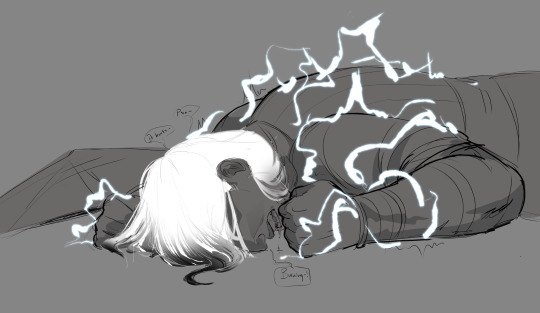
#hehe#:') sorry for angst#digital art#fan art#my art#art#doodle#mk1 2023#mortal kombat 1#kung lao#mk1 raiden#doodles#mk fujin#mk nightwolf#i dont know why they changed fujin to be a sister but I thought why not night wolf too#but I do love original night wolf#new idea- what if cause of the lightning raiden cant have piercings for the concern of shocking himself#so he just gets tattoos lmao#either just for fun or maybe to hide the lightning scars???#slowly adding to my idea the long usage of the amulet changing him hehehehehe#also....bottom raiden- cause he deserves to be cared for LMAO
415 notes
·
View notes
Text

Ancient Egyptian heart amulet (gold and green schist) of one Manhata. Artist unknown; ca. 1479-1425 BCE (reign of Thutmose III, 18th Dynasty, New Kingdom). From the Tomb of the Three Foreign Wives of Thutmose III at Wadi Gabbanat el-Qurud, Thebes; now in the Metropolitan Museum of Art.
#art#art history#ancient art#Egypt#Ancient Egypt#Egyptian art#Ancient Egyptian art#Egyptian religion#Ancient Egyptian religion#kemetic#Thutmose III#18th Dynasty#New Kingdom#jewelry#jewellery#pendant#amulet#metalwork#gold#goldwork#schist#Egyptian Thebes#Metropolitan Museum of Art
702 notes
·
View notes
Text






flag id: five flags with 6 stripes. the top flag's stripes are dark brown, medium brown, cream, pale purple, faded indigo, and dark brown. the middle left flag's stripes are light teal, very light teal, bluish-white, pale warm purple, soft indigo, and medium silver. the middle right flag's stripes are caramel brown, bluish-white, light warm purple, purple, medium dark indigo, and dark indigo. the bottom left flag's stripes are purple, soft indigo, light teal, light brown, medium brown, and brown. the bottom right flag's stripes are light silver, very light silver, light teal, medium light turquoise, soft blue, and indigo.
each flag has a symbol in its top left corner. the top flag has a symbol of an open book with sparkles above its pages, which is dark brown with a cream outline. the middle left flag has a symbol of a crystal ball on a stand, which is silver with a bluish-white outline. the middle right flag has a symbol of a corked potion bottle, which is dark indigo with a bluish-white outline. the bottom left flag has a symbol of a wand with a star-shaped tip, which is brown with a light teal outline. the bottom right flag has a symbol of a necklace with a large crystal pendant, which is indigo with a very light silver outline. end id.
banner id: a 1600x200 teal banner with the words ‘please read my dni before interacting. those on my / dni may still use my terms, so do not recoin them.’ in large white text in the center. the text takes up two lines, split at the slash. end id.
spellbook crystal | potion wand | amulet
spellbook: one who presents in an aurethine way
crystal: one who presents in an aurethine and feminine way or whose presentation is feminine in an aurethine way
potion: one who presents in an aurethine and masculine way or whose presentation is masculine in an aurethine way
wand: one who presents in an aurethine and neutral way or whose presentation is neutral in an aurethine way
amulet: one who presents in an aurethine and gender nonconforming way or whose presentation is gender nonconforming in an aurethine way
[pt: spellbook: one who presents in an aurethine way
crystal: one who presents in an aurethine and feminine way or whose presentation is feminine in an aurethine way
potion: one who presents in an aurethine and masculine way or whose presentation is masculine in an aurethine way
wand: one who presents in an aurethine and neutral way or whose presentation is neutral in an aurethine way
amulet: one who presents in an aurethine and gender nonconforming way or whose presentation is gender nonconforming in an aurethine way. end pt]
aurethesia presentation terms in the style of various other neogender umbrella presentation terms (ex: these techrobai presentations, these kenochoric presentations)!
i based the terms on various magical items. here are the symbol sources: spellbook, crystal, potion, wand, amulet!
tags: @radiomogai, @liom-archive, @macchiane, @genderstarbucks, @sugar-and-vice-mogai
tags cont: @p-rtyboy, @pawsibell, @dragonpride17, @en8y, @presentationflag-archive
dni link
#presentation#aurethine-presenting#spellbook#crystal#potion#wand#amulet#aurethesia#aurethine#aein#reth#roa#eoan#my flags#my terms#new flag#new term#mogai flag#mogai term#mogai
33 notes
·
View notes
Text
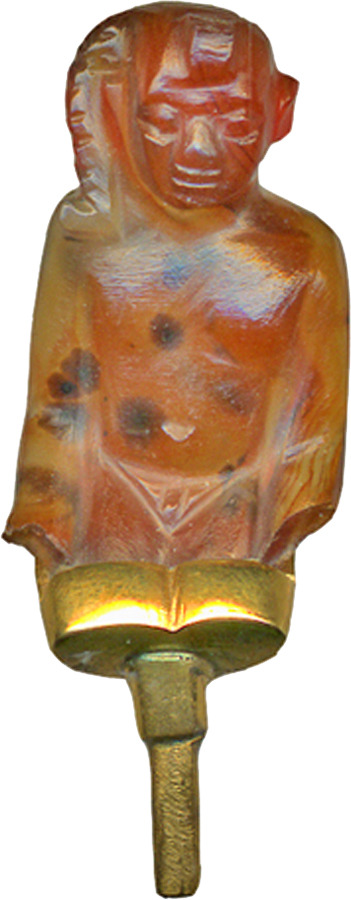
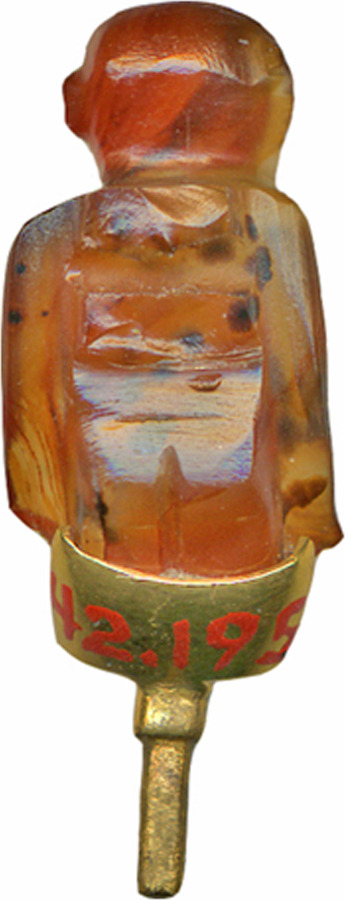
Amulet
Egyptian, 1200-736 BCE (New Kingdom-early Third Intermediate Period)
The feet have broken away from this black-speckled carnelian representation of Horus-the-Child, but the angle of the legs suggests he was seated on his mother's lap. A loop protruding from the shoulders is also broken off.
88 notes
·
View notes
Text

Von Lavellan
Clan Alchemist, Inquisition Researcher Rift Mage
#Dragon Age#Dragon Age: Inquisition#Dragon Age: the Veilguard#Von Lavellan#as always in the Inquisition battlemage armour bc it's truly one of my favourites#and soft reboot on his Tevinter wardrobe - mostly updating some shapes#wasn't thrilled on some colour choices as well so that got reworked too#also got him wearing the Pavus birthright amulet as a earring bc it was funniest/most insane I could think for him to do :)#Halan'dhal got swapped out for a new staff too - imma call it Snake Charmer :))))#the Archmage Staff Blade STAYS
54 notes
·
View notes
Text

serve cunt, not the bosses.
#new ttrpg game means NEW COOLGUY#this is oxbow; fullname tachanka oxbow.#yes they're named after ye olde horse-drawn technical. i am allowed this.#their main ability set is called Exploding Angel. they make amulets that go boom#umbrafall campaign#my art#shoutout to polishcostumes on here for the lovely reference material
16 notes
·
View notes
Note
Could you elaborate on what the yanli-jc wwx conspiracy is?
They are just generally in cahoots re: making sure he's safe and bringing him home, sometimes in defiance of their parents or society or just the likely fact of his death. The first time Wei Wuxian runs away Jiang Cheng wants to follow him because he's worried he'll get hurt. Jiang Fengmian says no, and when Jiang Cheng sneaks out in defiance of his father's wishes with his little rucksack in hand, Yanli is waiting at the gates to support him and tell him to bring Wei Wuxian home safe, implicitly siding with him against their dad in the matter of whether Wei Wuxian might be in real trouble and if so, whether Jiang Cheng's help might be valuable.
The second time is during the sunshot campaign while Wei Wuxian is missing- she comes in when he's brooding over Wei Wuxian's sword and tells him how grown up he is, fusses over him a bit and asks him to bring him back. Jiang Cheng fervently agrees, and looks actively relieved and pleased she's asking this of him- it's blatantly obvious he was going to do it anyway, but her support and faith mean a lot to him which I think is significant because he's usually so worried about failure and he knows Wei Wuxian has been thrown in the burial mounds and is almost certainly dead, but he's not actually frightened he'll fail her, he's just glad they're on the same page. He gets extra support this round because Lan Wangji is also refusing to believe Wei Wuxian is dead and taking joint missions to Yiling with Jiang Cheng and his own turn at sword brooding.
Breaking the pattern, in CQL she was originally going to go with him to talk to Wei Wuxian after he takes the Wens to the burial mounds but he kind of sneaks off without her when he sees her with Zixuan and then doesn't manage to bring Wei Wuxian home to her; she has a sad prophetic dream about it. The conspiracy is broken!
Until! They conspire to bring Yanli to Yiling so Wei Wuxian can see her wedding clothes. I personally think it's implied by the response to Zixuan's request for Wei Wuxian to be allowed at Jin Ling's hundred days ceremony that they were in on that together- either way they're both playing their part, because everyone from the Lan to the JIn know Jiang Cheng would happily take Wei Wuxian back and Yanli misses him. Whether they planned it or just moped really obviously is debatable buy money is on them being in on it together with Zixuan and maybe even Lan Wangji.
And then of course there's Nightless City, where Jiang Cheng notably does not try to get to Wei Wuxian but Yanli does, and then he finds him and loses him all over again so he can have a much more prolonged and less emotionally supportive round of refusing to believe Wei Wuxian is dead.
Bonus Round: The only time Yanli sends Wei Wuxian after Jiang Cheng it's when he's been captured by the Wen because he was already on top of the send Wei Wuxian home safe to Jiejie agenda.
#annnnd basically all of this is a cql exclusive! in the book there's no roadtrip we don't see yanli and JC interact during sunshot and she's#not there for the fall of lotus pier. and zixuan just writes a letter to wwx inviting him to the ceremony#whereas in the show you explicitly see him tell his dad that yanli#producer of heirs and legitimate grandsons#just has one teensie little thing that would make her happy#and lwj backs him up and writes the letter himself#i forget who says he can rejoin the jiang immediately if he gives up the amulet i think it's jgy and obviously a trap#but it's taken for granted that everyone from lxc to jgs knows jc will take him back if he's allowed to. womp womp also you get the shot of#JC and Yanli waiting for WWX together with Jin Ling when they get the news of Zixuan's death which is just. they wanted to introduce him to#jin ling together ;___________________; we three!!!
76 notes
·
View notes
Text



gee I’m thinking they’re out for some revenge
#me? changing the new amulets armor because I find it hideous compared to daylight? always#it’ll be hard to fight them tho cuz they know how both Jim and Toby fight#like how terrifying is that? that your opponent knows all your moves before you even have the chance to use them#I think you can guess who it is tho#trollhunters#tales of arcadia#toa#jim lake jr#toby domzalski#Trollhunter!toby#au#my art#Jim’s just having a time as usual
233 notes
·
View notes
Text

Carnelian Wadjet Eye Amulet
The Eye of Horus, the falcon god. The myth had it that the god Seth, who rivaled with Horus for the crown of Egypt, destroyed the eye, which was restored by Thoth. It is hence a symbol of regeneration, recovery, and good health.
New Kingdom, ca. 1540-1076 BC. Now in the Egyptian Museum of Turin. Cat. 1122
46 notes
·
View notes
Text

Girl Finds 3,500-Year-Old Egyptian Scarab Amulet in Israel
After looking online, the family realized the importance of the object and contacted the Israel Antiquities Authority.
An ancient Egyptian scarab amulet dating back around 3,500 years was found near an archaeological site in Hod Hasharon by 12-year-old Dafna Filshteiner during a family trip, the Israel Antiquities Authority announced on Thursday morning.
While hiking near Tel Qana, Filshteiner was looking for porcupine needles and smooth pebbles when she found an unusual object, which she had initially assumed was a stone.
“I showed it to my mother, and she said it was just an ordinary stone or a bead. But then I saw a decoration and stubbornly insisted it was more than that,” Filshteiner recalled.
After looking online, the family realized the importance of the object and contacted the Israel Antiquities Authority.
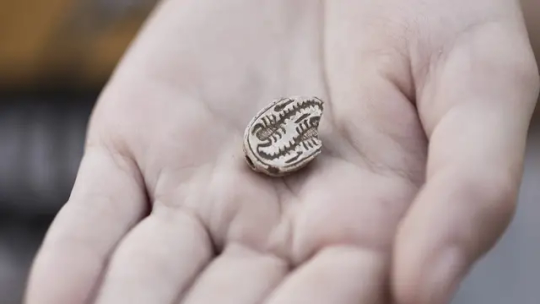


The amulet, which features a scarab with two scorpions and other symbols on it, was examined by Dr. Yitzhak Paz, a Bronze Age expert at the Israel Antiquities Authority, who confirmed the scarab was from the Egyptian New Kingdom period, about 3,500 years ago.
Generally, scarabs were viewed as sacred creatures in Egyptian culture and were associated with the early morning sun's Egyptian god Khepri. Since the symbol is connected to the Egyptian pantheon, the scarabs symbolize the concept of existence, growth, and new life.
Additionally, this beetle was seen as a sign of a divine creator because of its ability to create life from a dung ball, as the beetle lays its eggs inside said balls, the Israel Antiquities Authority noted.
Aside from the scarab, the scorpions on the amulet may also hold a religious significance to ancient Egyptians, as "the scorpion symbol represented the Egyptian goddess Serket, who was believed to protect pregnant mothers,” Dr. Paz explained.
The Israel Antiquities Authority also explained that the scarab also has the “nefer” symbol, which means “good” or “chosen,” and a symbol of the royal staff.

#Girl Finds 3500-Year-Old Egyptian Scarab Amulet in Israel#Hod Hasharon#Tel Qana#scarab amulet#ancient artifacts#archeology#archeolgst#history#history news#ancient history#ancient culture#ancient civilizations#ancient israel#ancient art
63 notes
·
View notes
Text

Matthieu Blazy, Bottega Veneta, Pre-Fall 2024 collection VS Egyptian amulet in the form of an elephant’s head, 3500–3100 BC. © Brooklyn Museum
#Matthieu Blazy#bottega veneta#new bottega#fashion#clothing#clothes#pre fall 2024#egyptian#ancient egypt#amulet#brooklyn museum#ivory#Elephant
34 notes
·
View notes
Text
I can literally feel my brain cells being sucked away every time I re-download instagram
#I get sucked in to reels for Hours and then I have no creativity left#even if I set timers on it my rat brain just wants to keep scrolling#I feel like a wizard with a cursed powerful amulet#that shit is literally evil I hate this new internet era#yt shorts as well#I need to get a browser extension that blocks them#anyway I’m mad I’ve wasted a Friday evening instead of drawing or creating or anytHING#I deleted it again lol#hopefully I can work on some stuff tomorrow
14 notes
·
View notes
Text
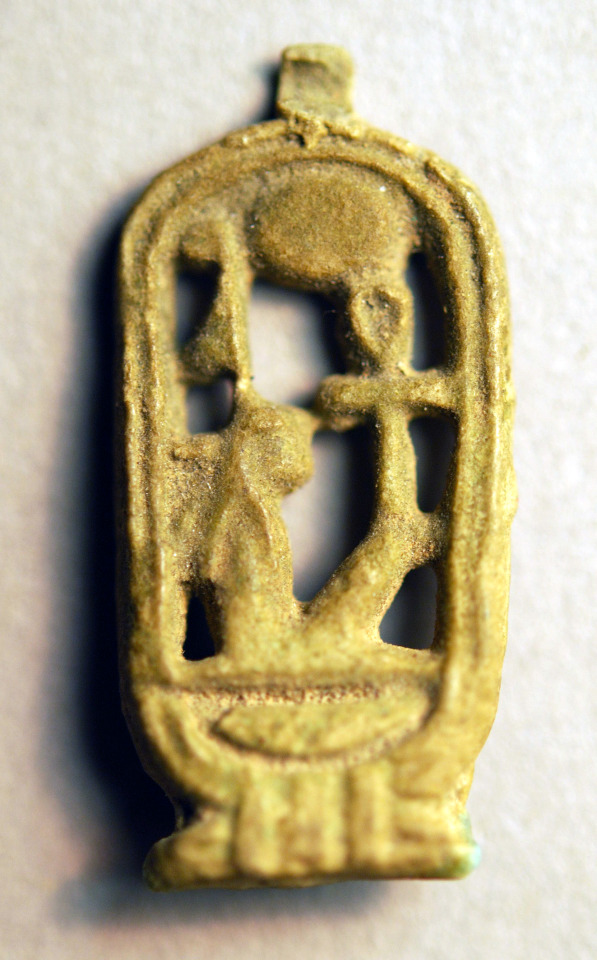
Ancient Egyptian faience amulet in the form of a cartouche of Nebmaatre, throne name of Amenhotep III "the Great" (r. ca. 1390-1352 BCE). Found in Amenhotep's tomb (WV 22) in the Valley of the Kings; now in the Metropolitan Museum of Art.
#art#art history#ancient art#Egypt#Ancient Egypt#Egyptian art#Ancient Egyptian art#18th Dynasty#New Kingdom#Amenhotep III#Nebmaatre#jewelry#jewellery#amulet#faience#cartouche#hieroglyphics#Metropolitan Museum of Art
554 notes
·
View notes